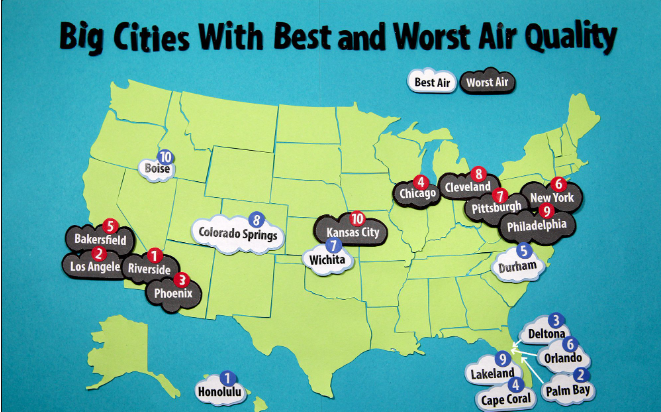It’s November. The leaves have mostly fallen off of the trees, now piled in a mix of red and brown across your lawn. You open your front door to go outside, expecting it to be a cool, autumn afternoon. Instead, you are hit with the warmth of a 70 degree day. Usually, fall afternoons are crisp, and the scent of woodsmoke fills the air as people start to think about the coming winter. This year, however, people are reaching for their t-shirts rather than sweaters, experiencing an autumn that feels almost like a cooler summer. Fall has been unusually warm so far this year, and not just for us. All over the world, the issue of climate change has become more prominent in recent years. Knowing the effects of the warming global atmosphere can help us become more aware of the potential climate change has to alter our lives.
Wildfires have become a big issue across the U.S. because of the warm weather mixed with the fall winds. According to the Commonwealth of Pennsylvania, “During autumn, leaves turn color and begin to fall, accumulating in a deep, fluffy layer that creates a fire hazard”. The mix of warm air and leaf foliage create a perfect fire starter. With drier foliage, even a small spark—from a campfire, a cigarette, or even a lightning strike—can lead to a destructive fire spreading rapidly across the landscape. This issue isn’t limited to forested areas; suburban neighborhoods near natural reserves are also vulnerable.
 Chart from the Global Forest Watch, showing that the amount of wildfire reports in Pennsylvania has continued to increase into the fall season this year (2024).
Chart from the Global Forest Watch, showing that the amount of wildfire reports in Pennsylvania has continued to increase into the fall season this year (2024).
Droughts became a serious reality for Pennsylvania this fall. “On October 29, abnormal dryness and drought affected over 78 percent of the American population—the highest percentage in the U.S. Drought Monitor’s 25-year-long record,” a recent statement from NASA claimed. The lack of moisture affects all plants, hurting the ecosystems. Even the leaves began to fall early this year due to the lack of moisture which killed them faster. With less rainfall, reservoirs are at lower levels, affecting the water supply for households, agriculture, and industry. Farmers may struggle to water their crops, and communities may face water restrictions. Meanwhile, wildlife that depends on streams and rivers finds their habitats disappearing.
People with seasonal allergies usually experience the worst of them in the spring and fall months. The unusual warm weather lingering from the summer has allowed allergens to stay around much longer than they usually would. The lack of rain, which would wash allergens away, is also a prominent factor. Heightened allergy seasons are not only a burden to those with preexisting conditions but also to those who don’t usually suffer. Higher levels of pollen and dust can lead to respiratory issues, fatigue, and decreased productivity, impacting students, workers, and healthcare systems
Evidently, climate change is overtaking our lives, and this warm fall weather is just a warning for what is to come. Although these may seem like minor issues that won’t affect most of the population, the signs are clear: climate change isn’t a distant threat—it’s affecting our seasons, our safety, and our health right now. If we overlook these signs, we may find these ‘unusual’ warm autumns becoming our new normal, along with all the issues they bring. Recognizing the urgency now can inspire individuals and communities to take action toward sustainability and climate solutions.










